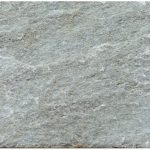Introduction:
Interlocking cultured stone has become a popular choice for homeowners, architects, and builders alike due to its aesthetic appeal, durability, and ease of installation. This versatile material mimics the look of natural stone while offering additional benefits such as cost-effectiveness and lightweight construction. In this comprehensive guide, we will explore the various aspects of interlocking cultured stone, from its composition and manufacturing process to installation techniques and maintenance tips.
Composition and Manufacturing Process:
Interlocking cultured stone is typically made from a mixture of cement, aggregates, pigments, and other additives to mimic the appearance of natural stone. The manufacturing process involves pouring the mixture into molds that are designed to replicate the texture and shape of various types of stone, such as granite, limestone, or slate. Once the mixture has cured and hardened, the resulting interlocking stones are ready for installation.
One of the key advantages of interlocking cultured stone is its lightweight nature compared to natural stone, making it easier to handle and transport. This also translates to lower shipping costs and reduced labor requirements during installation. Additionally, the manufacturing process allows for a high level of customization, with a wide range of colors, textures, and sizes available to suit different design preferences.
Stepping stone maintenance for long-term beauty :
Installing interlocking cultured stone is a straightforward process that can be completed by homeowners or professionals with basic masonry skills. The interlocking design of the stones allows for easy alignment and secure placement without the need for mortar or adhesives. Here are the general steps involved in installing interlocking cultured stone:
1. Prepare the Surface: Ensure that the surface where the interlocking stones will be installed is clean, level, and free of debris. If necessary, apply a waterproofing membrane to protect the underlying structure from moisture.
2. Lay the Foundation: Start by laying a base course of interlocking stones along the bottom of the installation area. Make sure the stones are securely interlocked and level using a rubber mallet or hammer.
3. Build Upward: Continue adding additional courses of interlocking stones, alternating the joints for a staggered pattern. Use a level to check the alignment and adjust the stones as needed.
4. Cut and Trim: To fit the interlocking stones around corners or edges, use a masonry saw or chisel to cut them to size. Be sure to wear appropriate safety gear when cutting the stones.
5. Finish the Edges: To create a clean and polished look, install edge and corner pieces where necessary. These specialized stones are designed to seamlessly integrate with the interlocking stones for a professional finish.
6. Seal the Surface: Once the interlocking cultured stone is installed, apply a sealer to protect it from water penetration, staining, and fading. Follow the manufacturer's instructions for proper application and maintenance.
Maintenance Tips:
Interlocking cultured stone is a low-maintenance material that requires minimal care to preserve its appearance and longevity. Here are some tips to help you maintain your interlocking stone surfaces:
1. Regular Cleaning: Periodically clean the interlocking stones with a mild detergent and water to remove dirt, grime, and other debris. Avoid using harsh chemicals or abrasive cleaners that could damage the surface.
2. Sealing: Depending on the type of sealer used during installation, you may need to reapply it every few years to maintain its protective properties. Check the condition of the sealer annually and touch up any areas that show signs of wear.

3. Inspect for Damage: Keep an eye out for any chips, cracks, or loose stones in the interlocking surface. Promptly repair any damage to prevent further deterioration and maintain the structural integrity of the installation.
4. Preventative Measures: To protect interlocking cultured stone from excessive wear and tear, avoid placing heavy objects on the surface, using sharp tools near the stones, or subjecting them to extreme temperatures or moisture levels.
Conclusion:
Interlocking cultured stone offers a practical and visually appealing alternative to natural stone for a variety of indoor and outdoor applications. Its lightweight construction, ease of installation, and customizable design options make it a popular choice among homeowners and professionals seeking to enhance the aesthetic appeal of their spaces. By following the guidelines outlined in this comprehensive guide, you can successfully install and maintain interlocking cultured stone surfaces that will stand the test of time and elevate the beauty of your surroundings.
